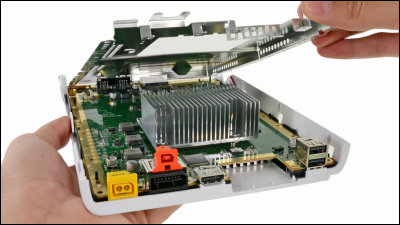I tried disassembling the main body separately to find out the secret of the explosive operation of 'PlayStation 5 (PS5)'

'
PlayStation®5 | Play Has No Limits | PlayStation
https://www.playstation.com/ja-jp/ps5/
For models equipped with a Blu-ray drive, a movie to be disassembled on YouTube's PlayStation Japan official channel has been released before the release.
Official release of disassembled video of 'PlayStation 5 (PS5)' --GIGAZINE

This time, we will disassemble the 'PS5 Digital Edition' that does not have a Blu-ray drive.

For disassembly, we prepared
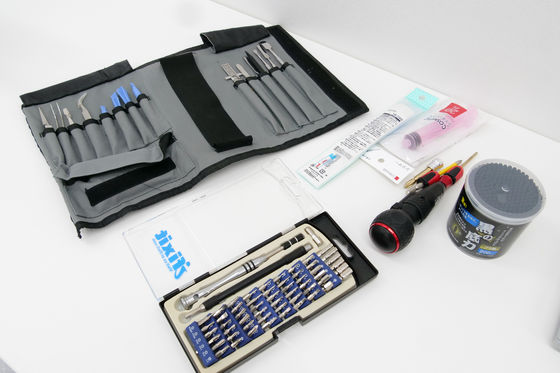
First, remove the white panel on the side with the logo. While lifting the logo part ...
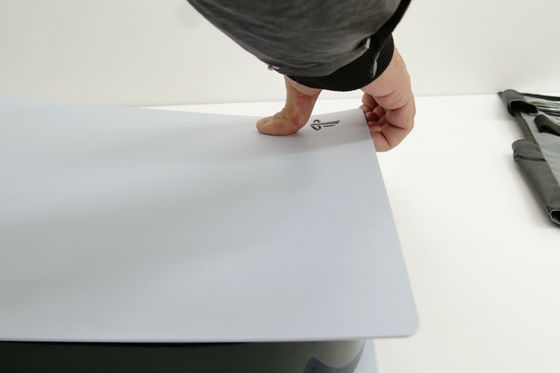
All you have to do is slide the white panel toward the bottom of the PS5.
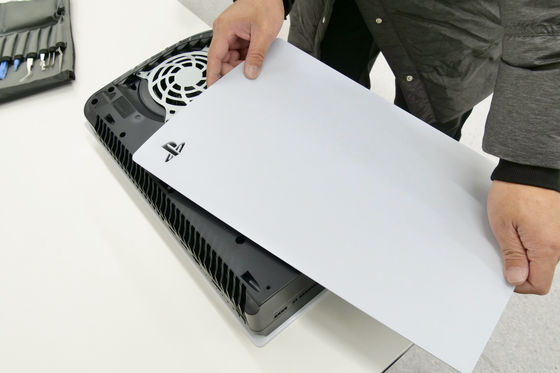
There is a round inset protrusion on the PlayStation logo part, so you need to lift the logo part and then slide the whole thing.
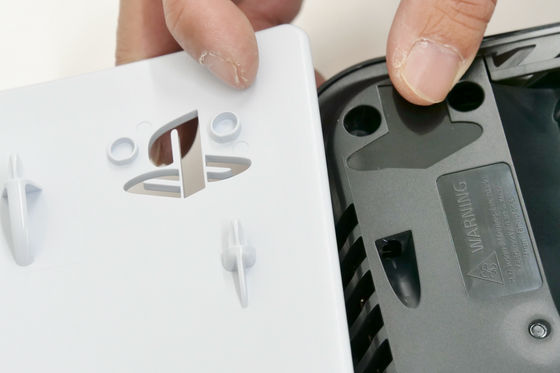
In addition, since there are only multiple claws as shown below, it is easy to remove the white panel once you get used to it. However, when removing it for the first time, I had a hard time not knowing how much force to lift the logo part.
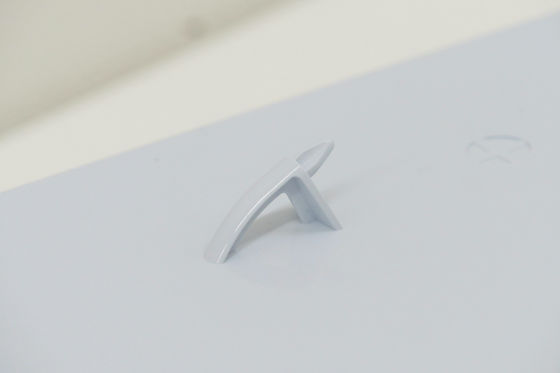
In the red frame part is a dust catcher that can suck out the dust inside the PS5 with a vacuum cleaner. The dust catcher is only on the logo side, not on the other side.
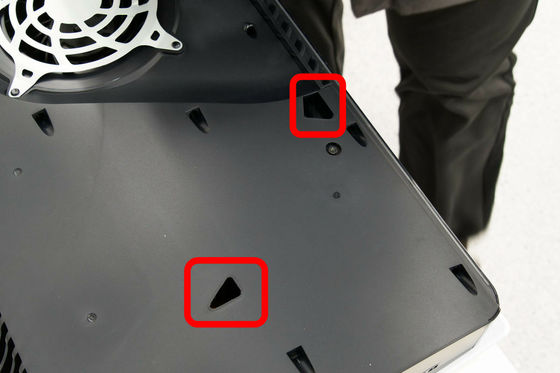
The black housing under the white panel is screwed from both sides. The screw on the side with the PlayStation logo could be removed with the T9 Torx wrench that came with iFixit's dedicated repair kit. The number of screws is two.
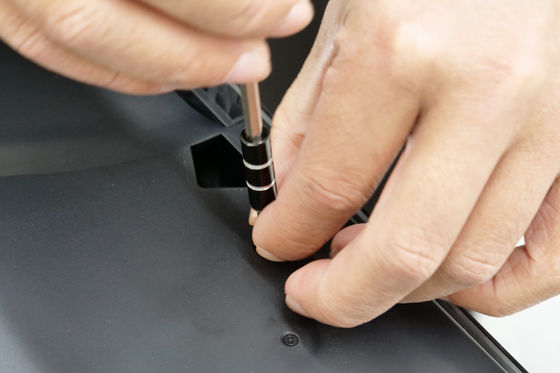
The PS5 fan is equipped with a double-sided intake type fan, and the fan is exposed from both sides of the housing. However, since the fan cover is riveted on the logo side, it is impossible to disassemble from this side. The rivet seemed to be made of resin.
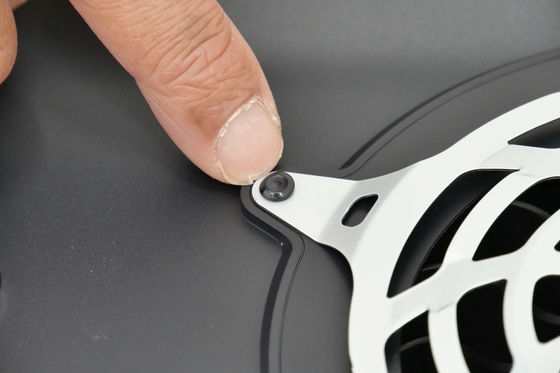
Looking at the fan cover part from the inside of the housing after disassembling various things, it looks like this.
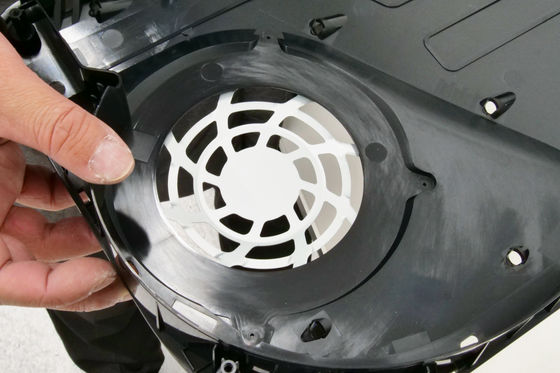
Next, I also removed the white panel on the other side. The white panel on the side without the logo has an inset in the upper right part, so you need to lift it and slide the panel toward the bottom.
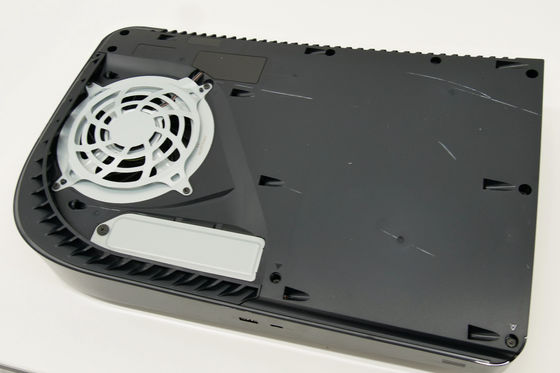
Note that once the white panel is removed, the housing will be scratched as shown below.
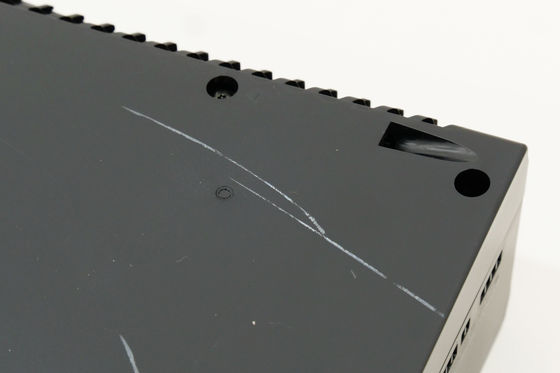
Let's derail from the disassembly work and add extended storage. Remove the white panel on the side without the logo on the housing, and remove the vertical cover next to the fan. The screw that secures this vertically long cover is engraved with the 〇 × △ □ icon on the PlayStation controller.
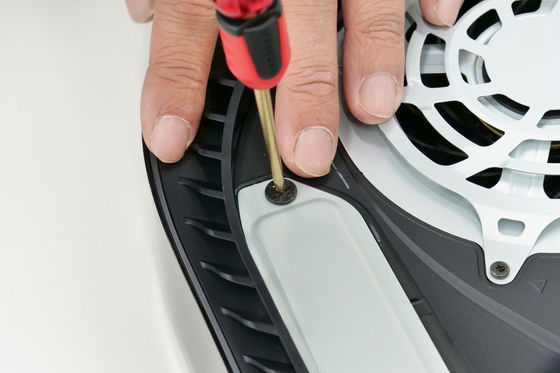
Then you can access the M.2 interface that supports PCIe 4.0.
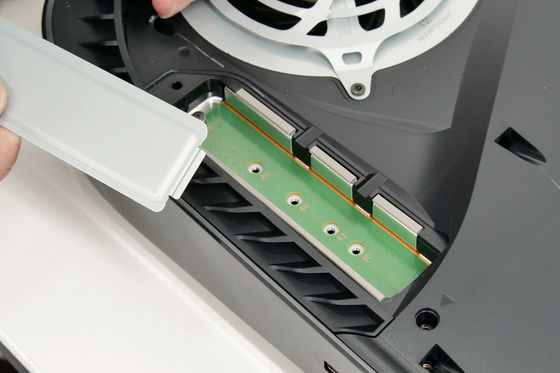
There is a screw in the part marked '110' here, so remove it ...
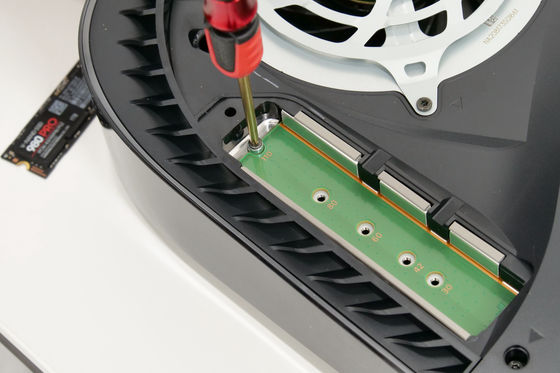
Take out the metal fittings inside.

Place this in the proper position ...
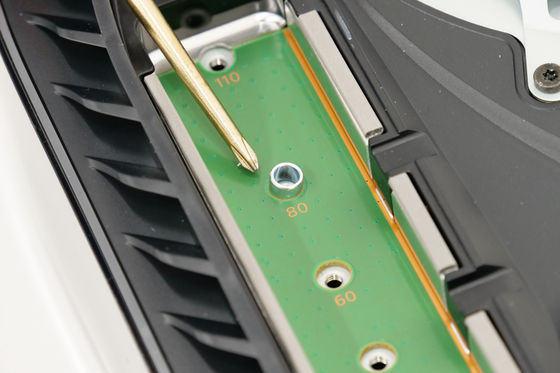
You can expand the storage by inserting an M.2 compatible SSD and screwing it in. However, PS5 does not support expansion storage at the time of writing the article, so when you insert the M.2 SSD and start PS5, 'The module is inserted in the expansion slot. After turning off the power and removing the module, , Please turn on the power again. ”Is displayed, and after a few seconds, the power turned off automatically.
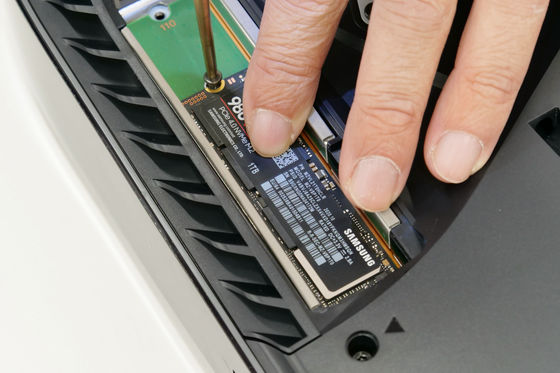
So, I will return to the disassembly work again. The screw on this side can also be removed with a T9 Torx wrench. The number of screws is 7.
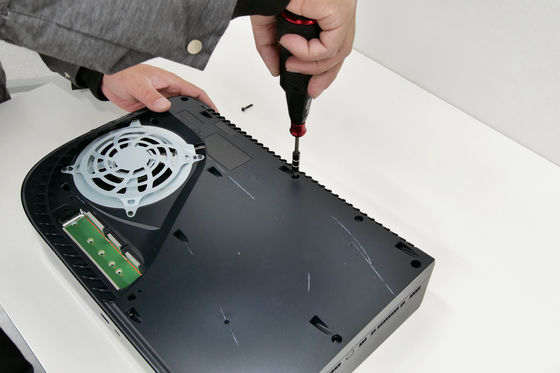
I was able to remove the screws on the fan cover with the same T9 Torx wrench.
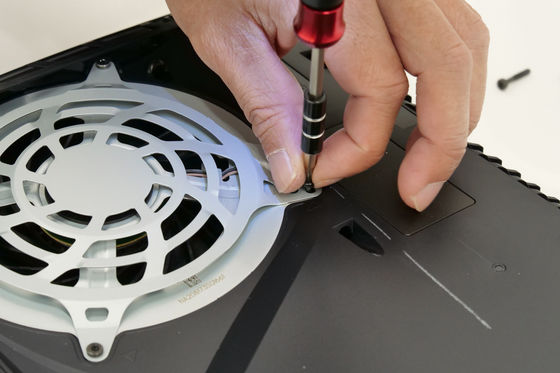
Remove some of the screws that hold the fan cover underneath the ventilation cover.
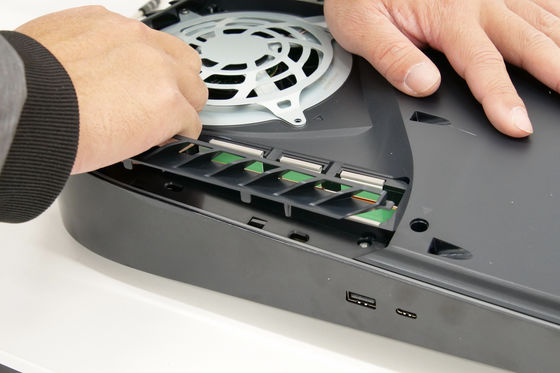
The cover is fastened with a claw like this, so you can remove it by pulling it with your hand normally.
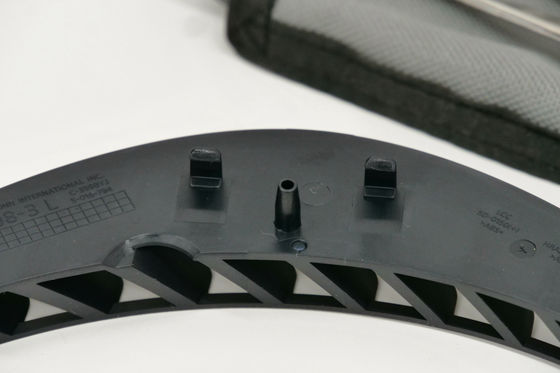
When you remove the fan cover, it looks like this.

There were four screws that fastened the fan cover, and screws of different lengths were used.
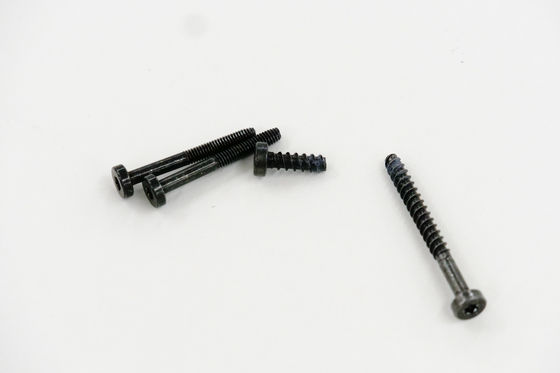
Then remove the black sticker next to the fan. If you remove this sticker and disassemble the PS5, you will not be able to receive the manufacturer's warranty, so disassemble after that at your own risk.
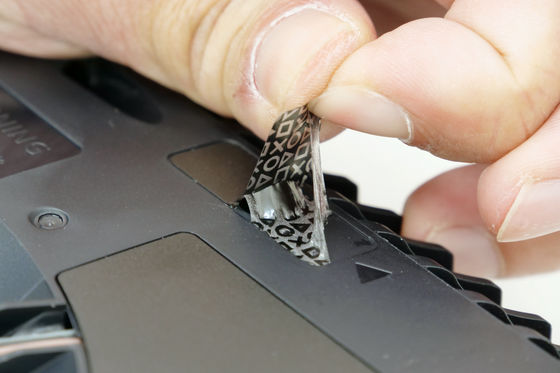
Remove the screw hidden under this.
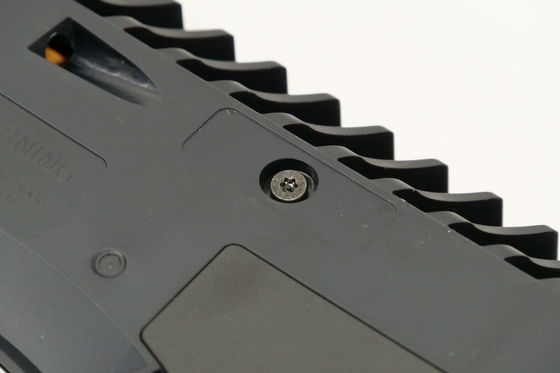
In addition, the part containing the cable extending from the fan is also covered with a cover, so remove it by hand.

This cover is also fixed with adhesive, so it can be peeled off by hand.
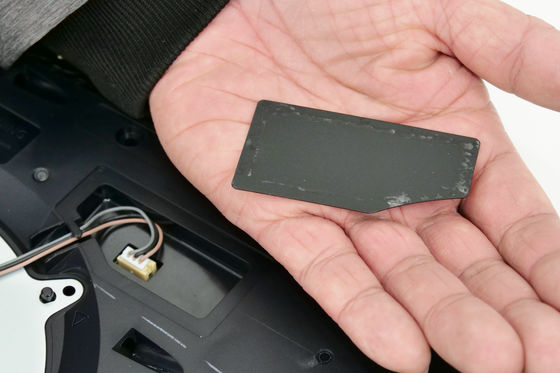
If you remove the cable extending from the fan ...
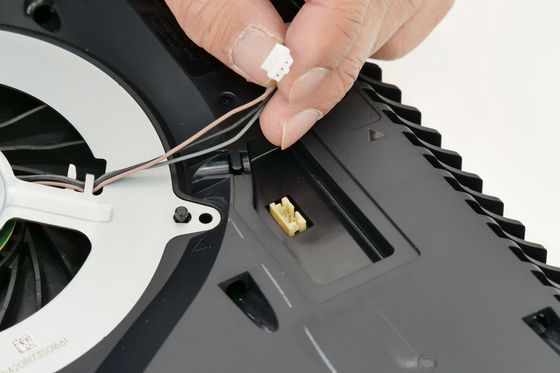
It is possible to remove a large double-sided intake fan with a diameter of 120 mm and a thickness of 45 mm. It was a DC fan made by Nidec .

When you remove the black housing part, you can see the board with a glance like this, but most of it is covered with a metal shield. In addition, the silver part that is different in color from the shield part in the middle part is a heat dissipation fin, which is integrated with the shield.
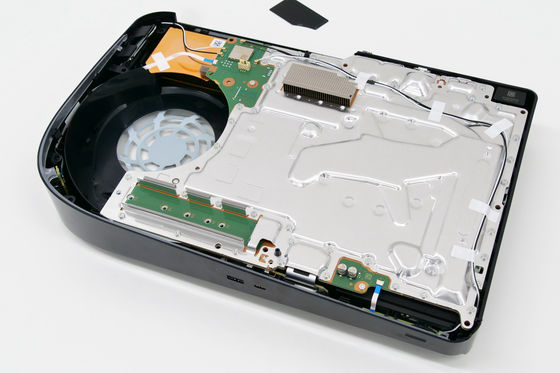
The word '

The black and white cable extending from the bottom is connected to the built-in power supply. The cable is secured to the shield with paper tape.
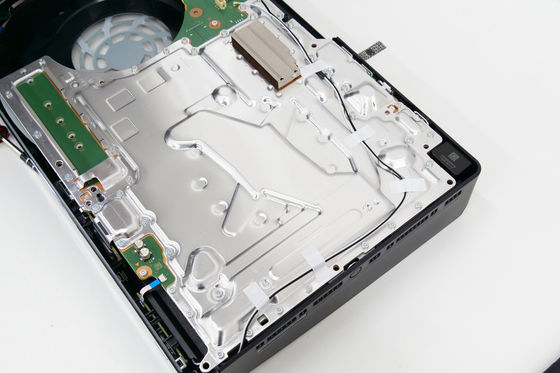
Disconnect this white and black cable from the board.
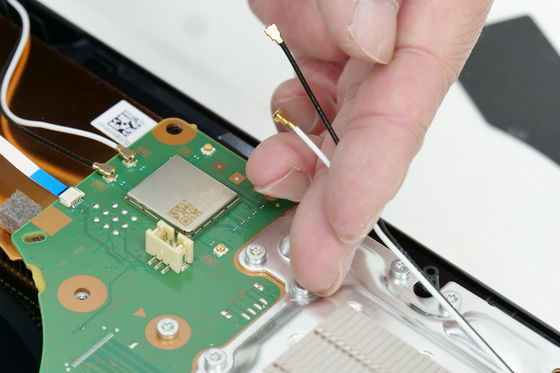
The same white and black cables are connected to the board in the immediate vicinity, so remove this as well.
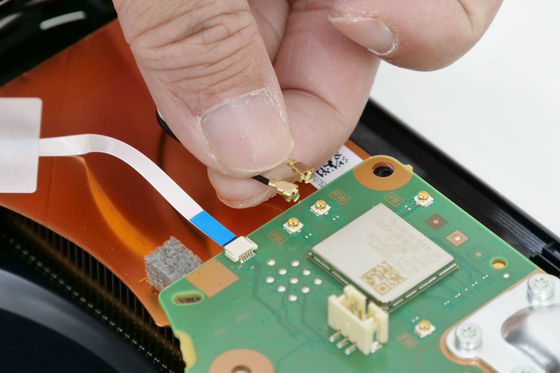
The 'J20H100', which is a module chip for wireless communication, is placed so as to be sandwiched between black and white cables. The FCC ID is '
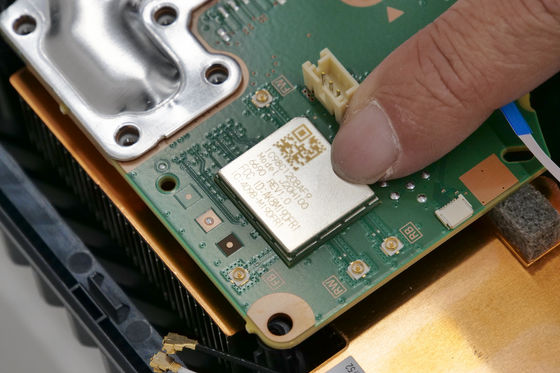
In addition, there are similar white ribbon cables at the tips of the left and right hands in the photo below. Specifically, right above the J20H100 and near the power button on the PS5.
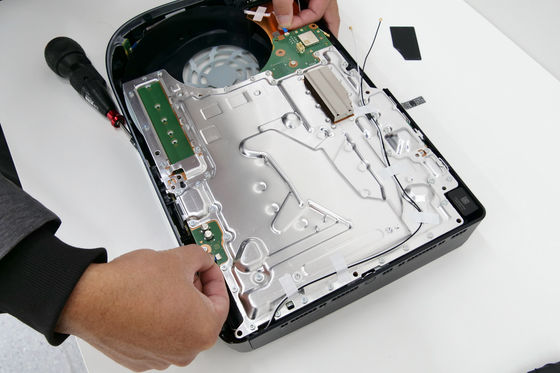
You can pull out the white ribbon cable in the opposite direction of the board.
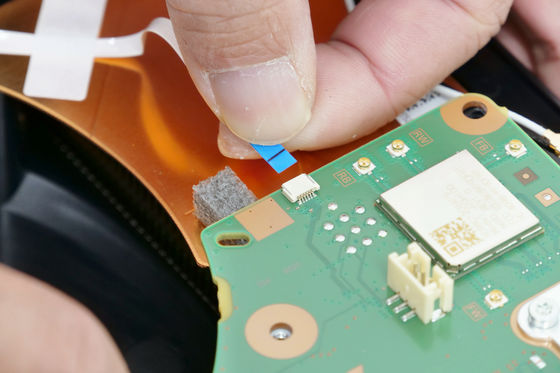
After disconnecting all the cables connected to the board, remove the silver shield and the screws that secure the board.
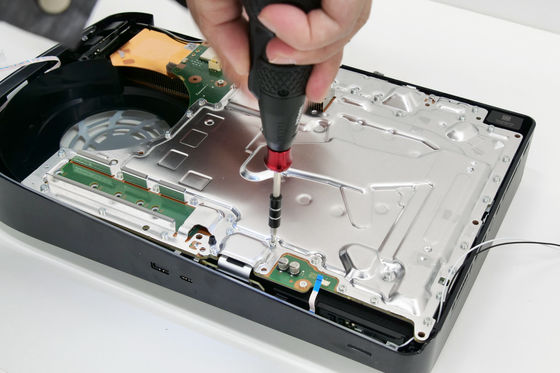
The screws here can also be removed with a T9 Torx wrench, but 43 were used for fixing.
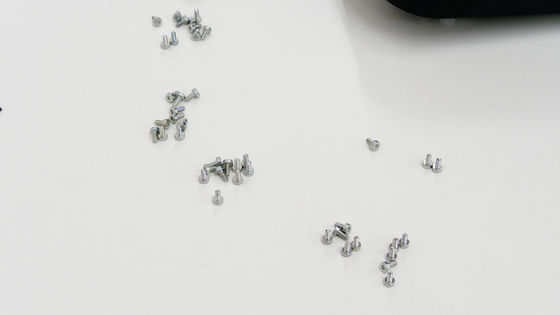
When I removed the screws, I found two mysterious terminals that were not used.
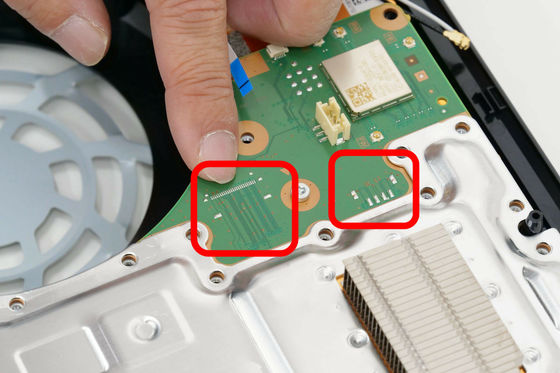
After removing the screws, remove the shield from the board. Silicon for heat dissipation is sticky to various chips on the board, and this is fixed so that the board and shield will not come off, so a little force is required to remove it.
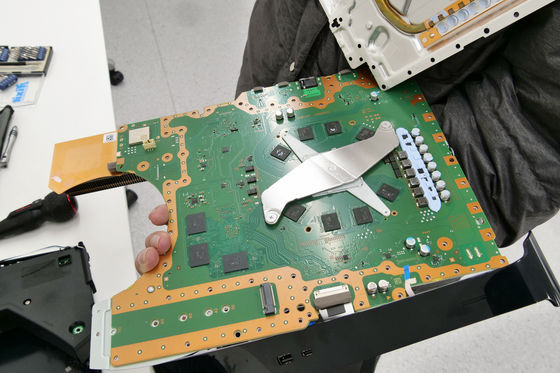
The light blue object on the shield side is silicon for heat dissipation.
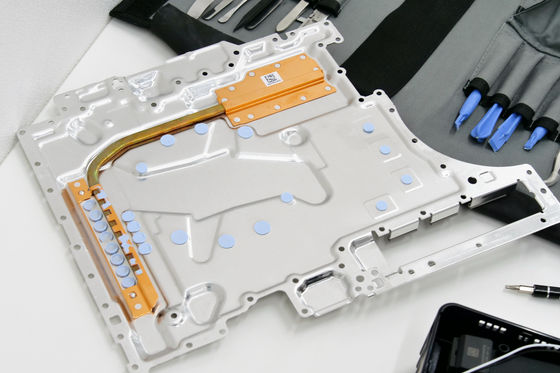
So, by removing the shield, the board finally appears. In addition, this seems to be the back side of the board.
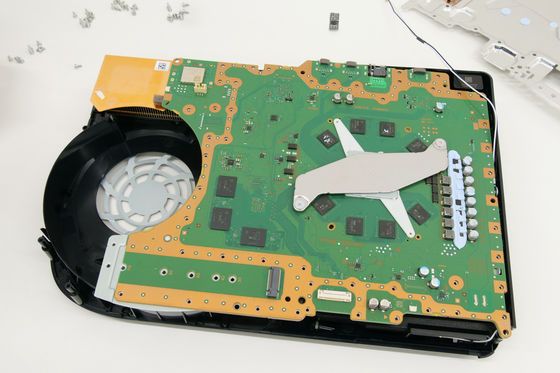
Parts that are arranged so as to cross in a cross are also fixed with screws, so remove them.
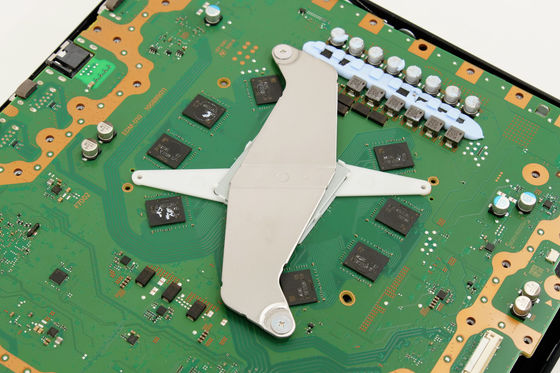
There are three PS5 custom SSDs at the bottom of the fan. Since this is the back side of the board, you can see 3 sheets, but 3 sheets are also arranged on the opposite side, and a total of 6 sheets make up 825 GB of storage.
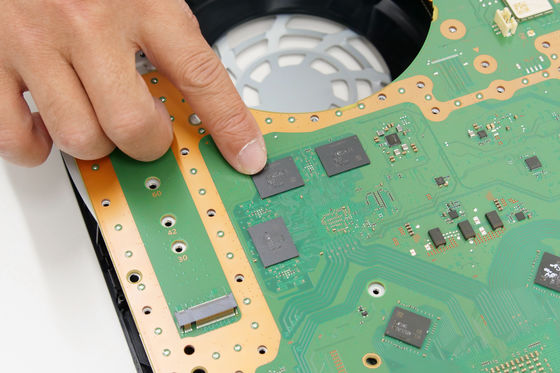
The eight chips arranged in a circle in the center are GDDR6 16GB memory.
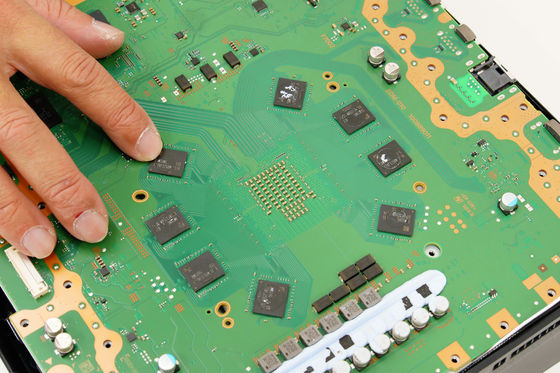
Other chips made by
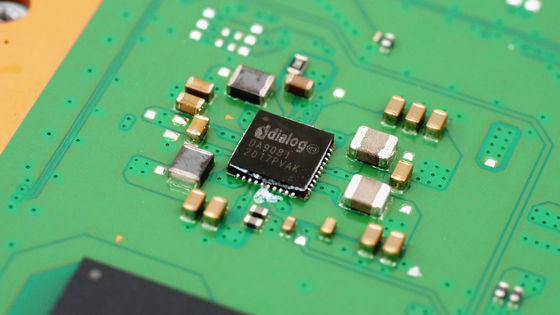
There are coils for power management.
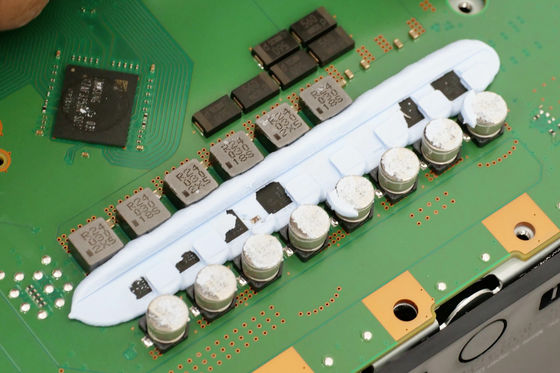
The editorial staff who did the disassembly work said, 'The equal length wiring is cleaner
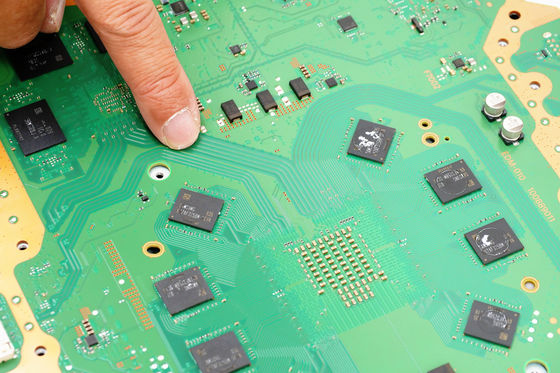
So, to check the surface of the board, remove the board and shield & heat sink. There are no screws to fix these, just sticking with silicon for heat dissipation ...
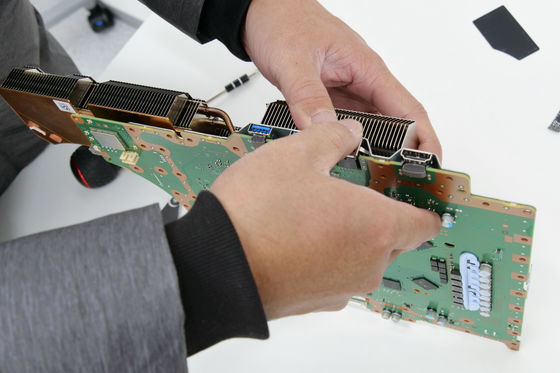
Pakari by hand with courage.
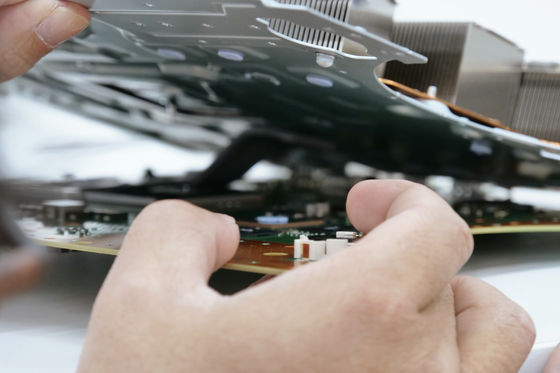
Then it looks like this.
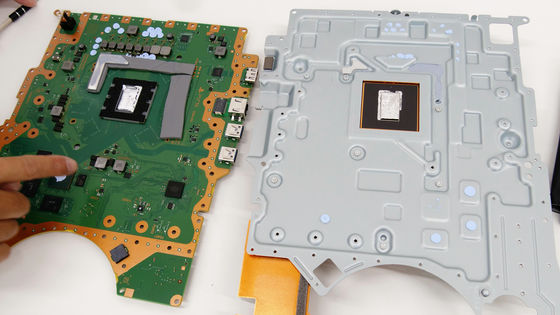
'PS5' logo on the board.
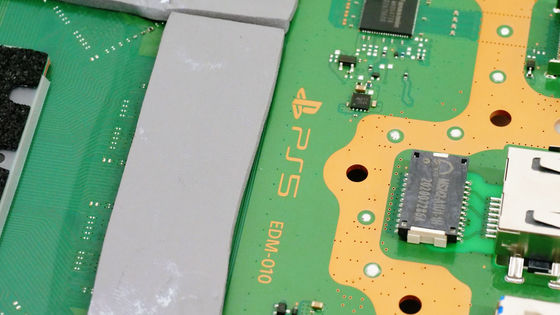
The reading speed of SSD of PS5 is super high speed of 5.5GB per second at the transfer speed of raw data. Supporting this is this custom SSD, which also contributes to shortening the loading time when playing games on PS5. By using a custom controller without using standards such as PCIe, it seems that the bandwidth is increased and the cost is kept low.
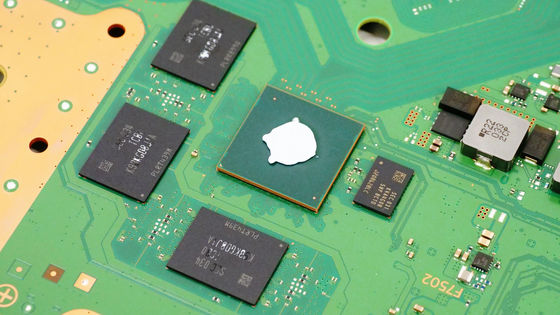
The custom SSD controller is located in the middle of the SSD. Silicon for heat dissipation is placed, but when I removed it, I could see the letters 'SIE'.
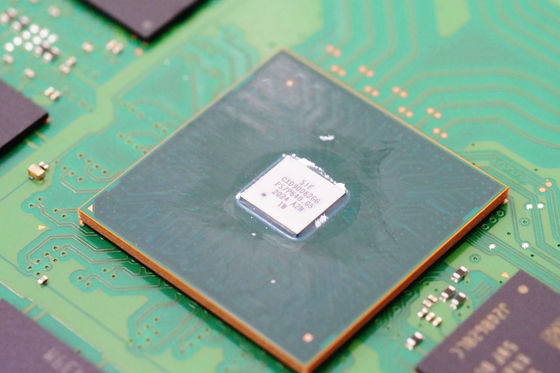
Besides, on the board, Panasonic's coin-type lithium battery (
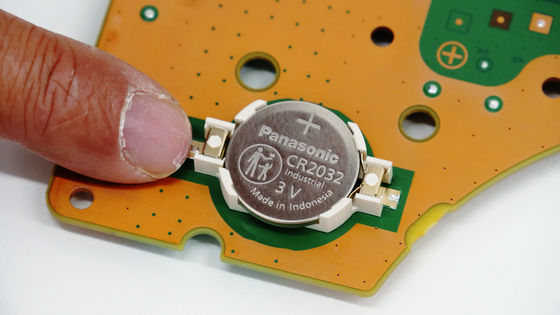
Custom tip made by SIE
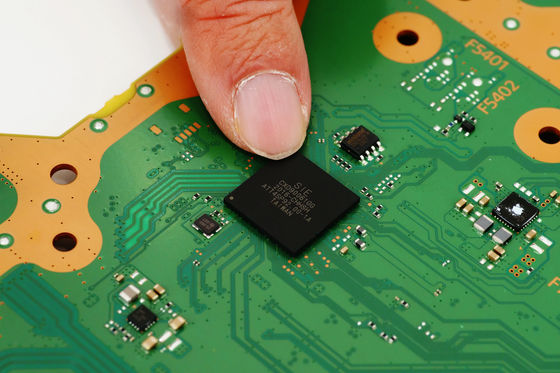
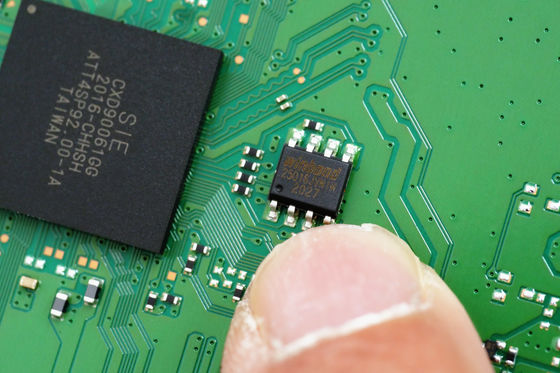
Panasonic chip at the end of the HDMI terminal
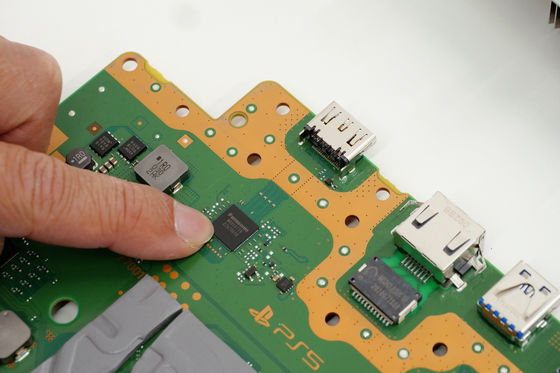
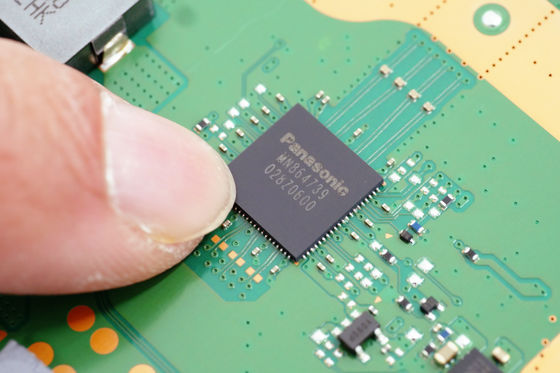
There is also a chip made by
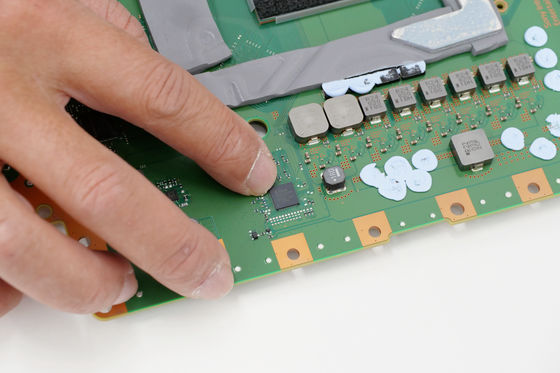
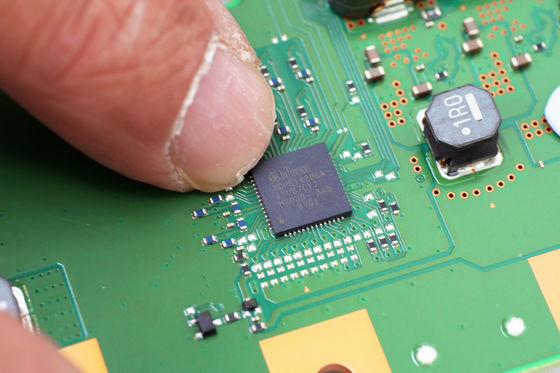
The following parts protruding from the board are terminals that connect to the built-in power supply.
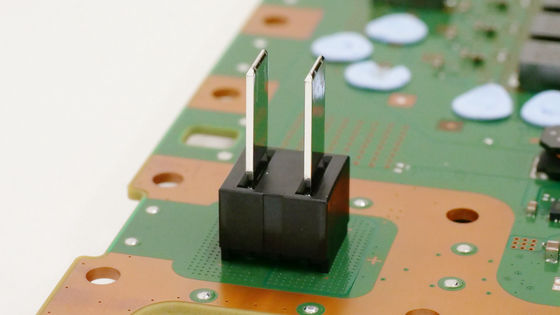
The built-in power supply looks like this ...

The terminals of the board will stick into the following holes.
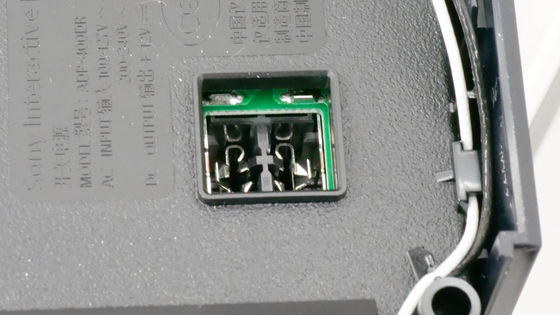
Gray heat-dissipating silicon is sticky around the custom SoC.
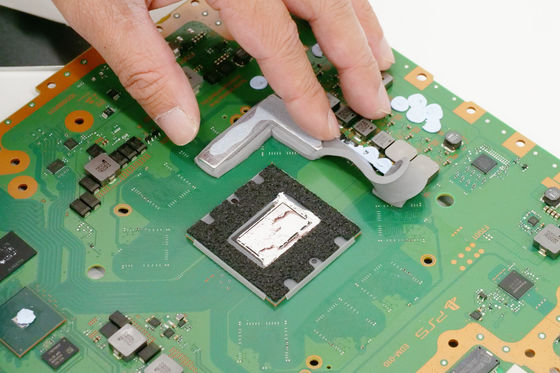
A mysterious piece of metal is also attached to this heat-dissipating silicon.
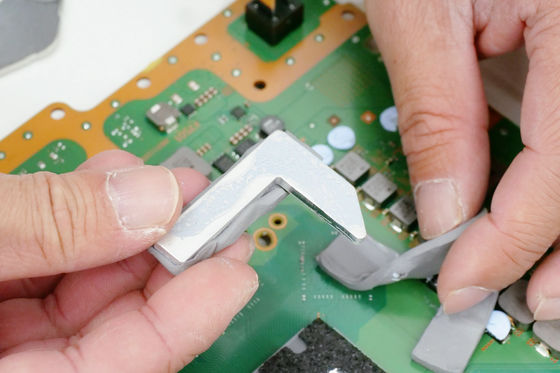
This piece of metal was also sticky to the shield.
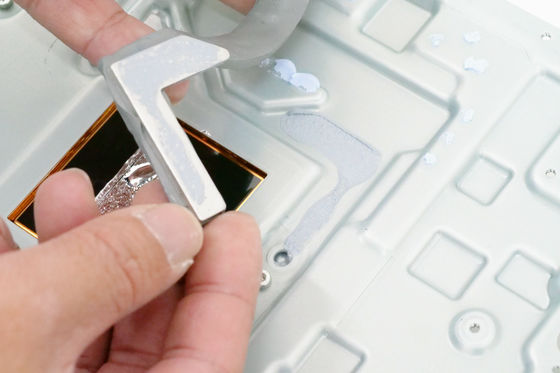
In order to check the custom SoC, first suck up the liquid metal with a sillimer. However, the work of sucking up liquid metal took a lot of time. It is unknown whether this is because the liquid metal is heavy, or because it was purchased by Sillimer at 100% and the sealing performance was low.
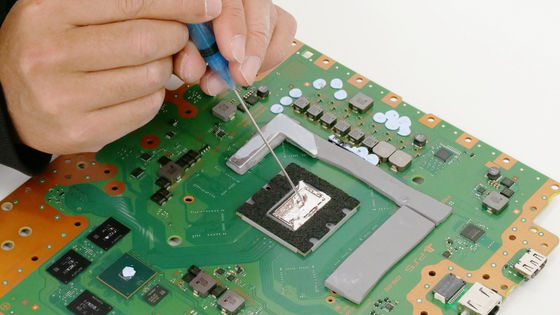
This is the only one that has been sucked up.
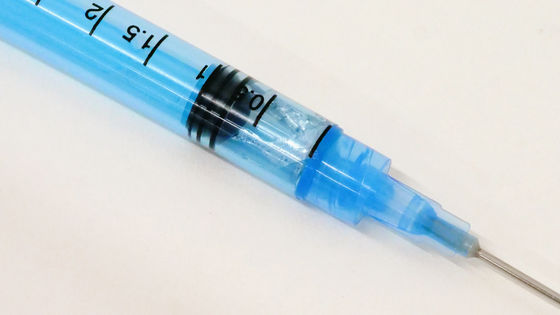
Remove the rest with a black cotton swab.
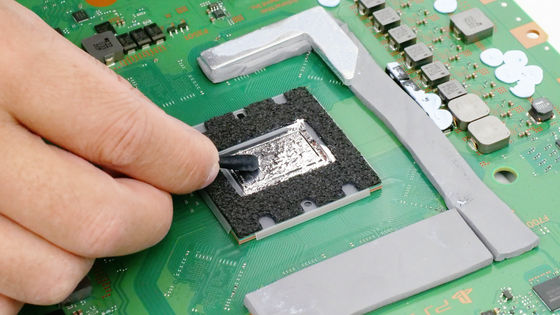
After patiently wiping and cleaning, the surface of the die was finally visible. If liquid metal gets on other board parts, it will corrode and cause a malfunction, so wipe it clean. With a black cotton swab, you can see where the liquid metal is attached at a glance and reduce the mistake of accidentally touching other parts, so the work will be a little faster.
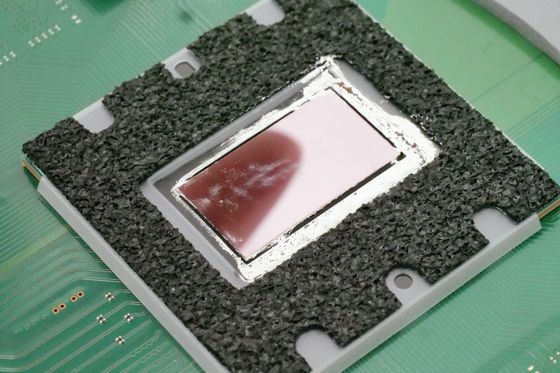
If you remove the cover that covers the SoC ...
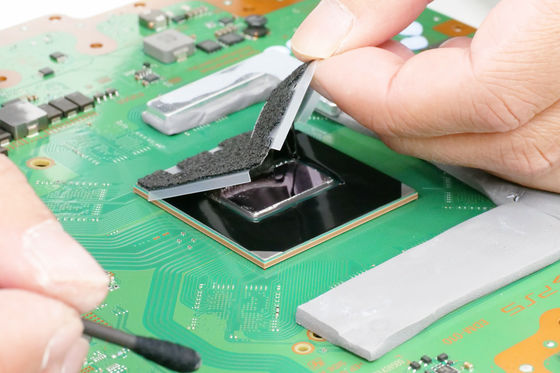
It turns out that the liquid metal is caulked so that it does not drip around the die.
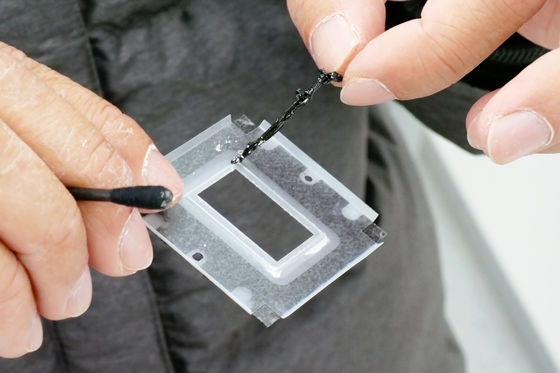
A hard sticker is attached to protect the capacitor, so if you remove this ...
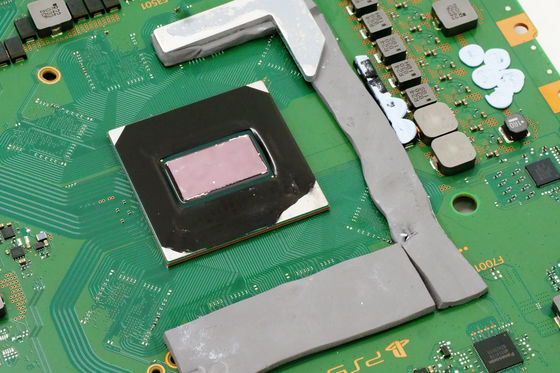
The custom SoC is finally here. Nothing is written on the surface of the die, but the name of
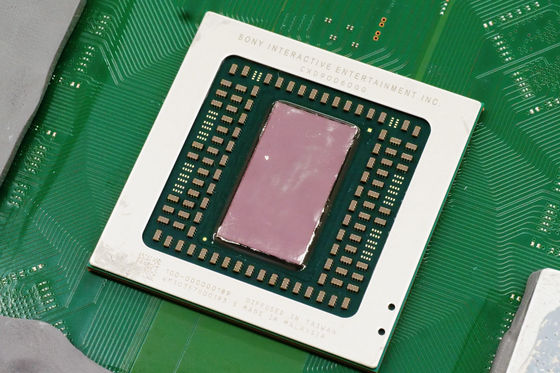
Even if it looks like it's wiped clean, if you trace it with a cotton swab, liquid metal will come out from the edges. It needs to be cleaned very carefully.
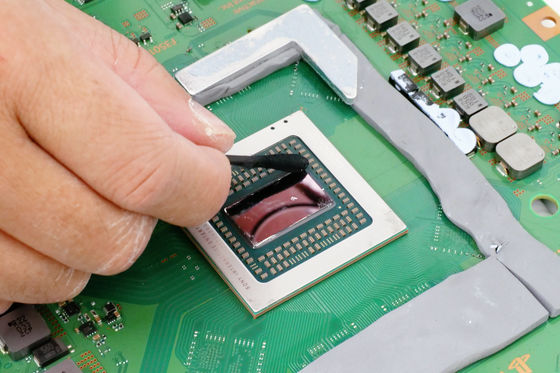
Since the liquid metal is poured between the board and the shield, the liquid metal is also sticky on the shield side. If you wipe this off and clean it ...

Like this. The silver object in the center is a heat dissipation plate called 'TIM (
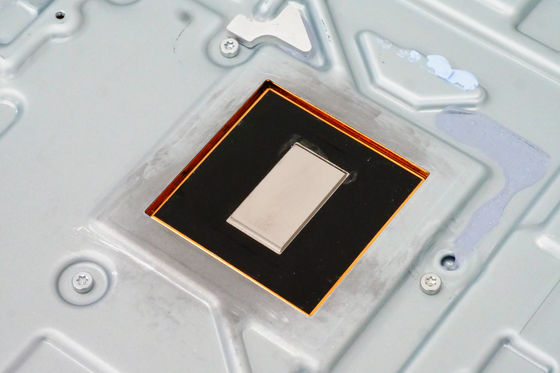
Remove the screws (7) around it ...
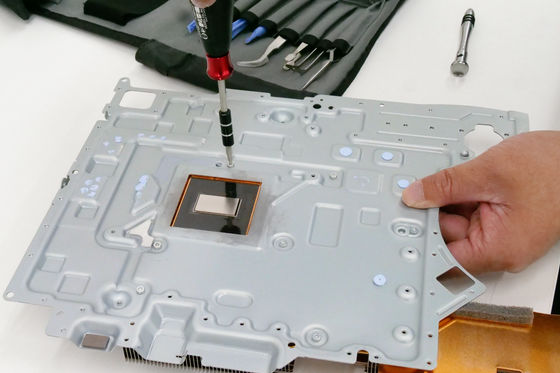
Separated shield and heat sink.
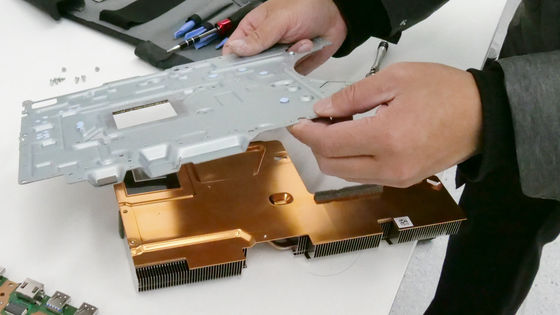
This is a heat sink.
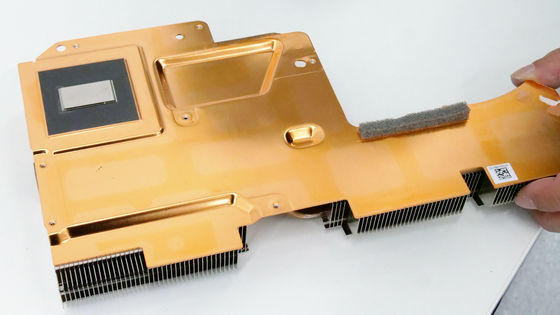
The TIM that comes into contact with the SoC is in contact with the aluminum heat sink of the heat sink like this.
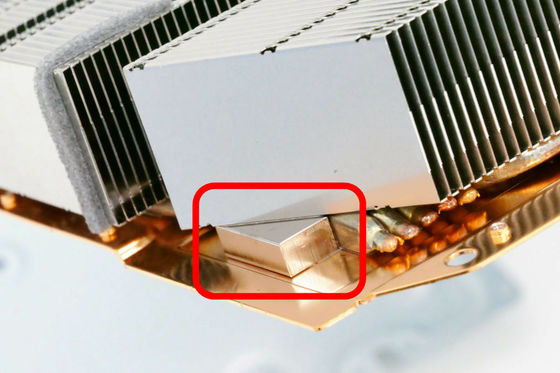
Then disassemble the built-in power supply.
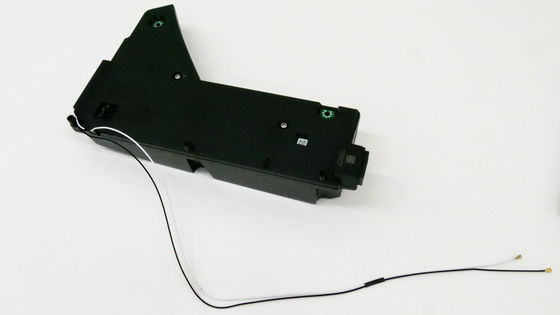
The model number of the built-in power supply and the details of input / output are as follows.
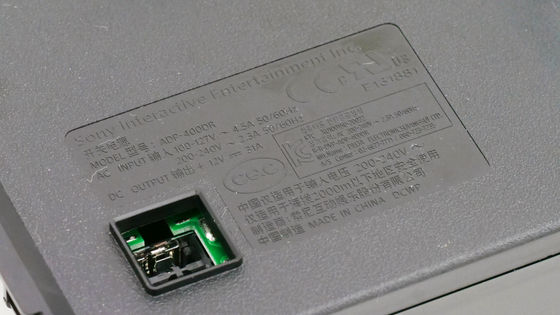
First, remove the metal plate with the cable that connects the board and the power supply ...
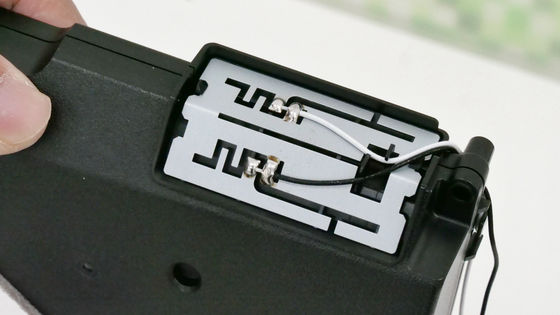
Remove the screw that secures the power supply case.
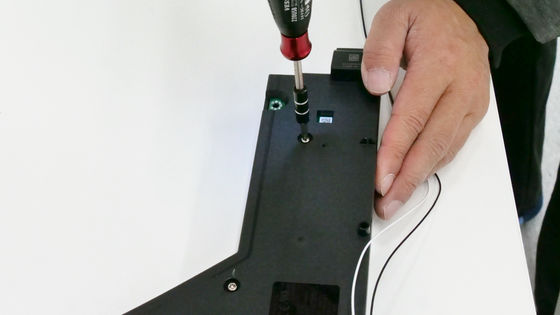
I inserted a spatula etc. into the gap of the case, but it was fixed quite firmly and I had a hard time opening it.
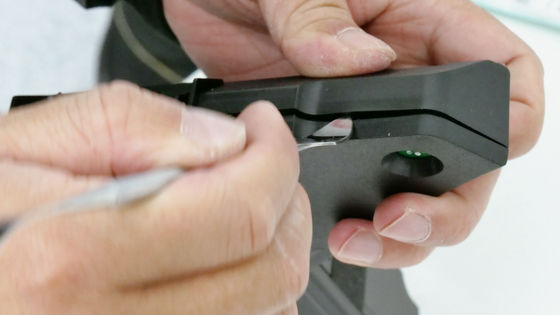
I managed to disassemble it.
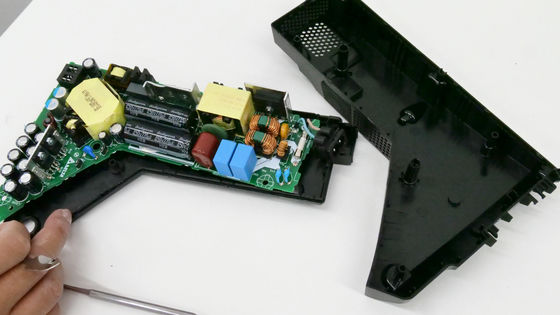
Many internal parts made by
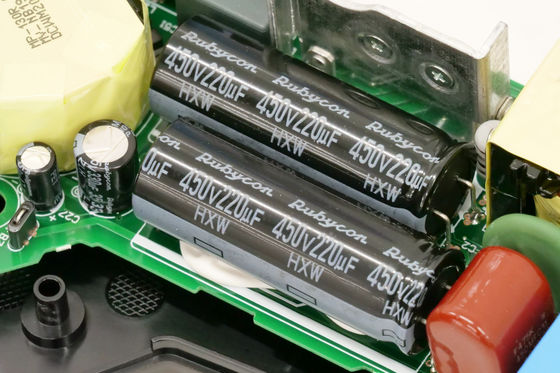
However, the letters
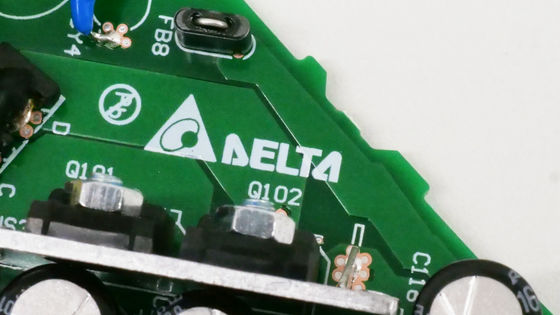
Finally, disassemble the panel part on the side of PS5.
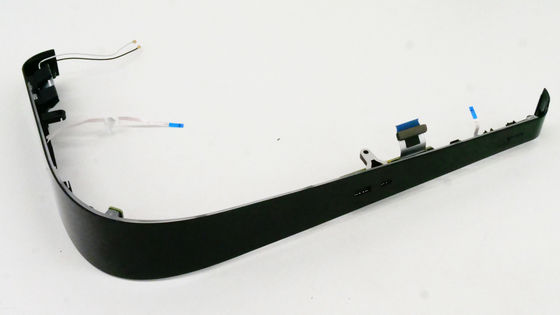
Three boards are stuck together like this.
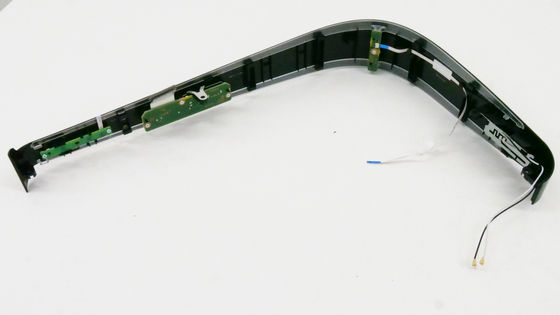
A board that connects a USB 2.0 compatible Type A port and a USB 3.1 compatible Type C port
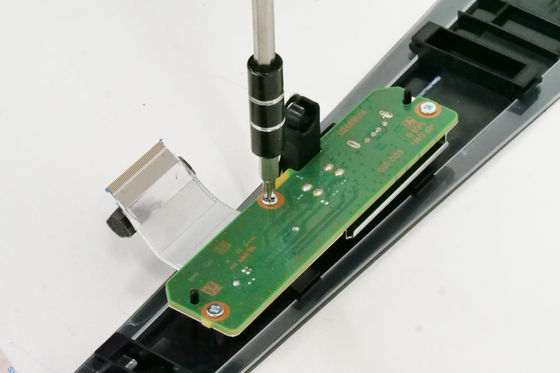
Board behind the power button
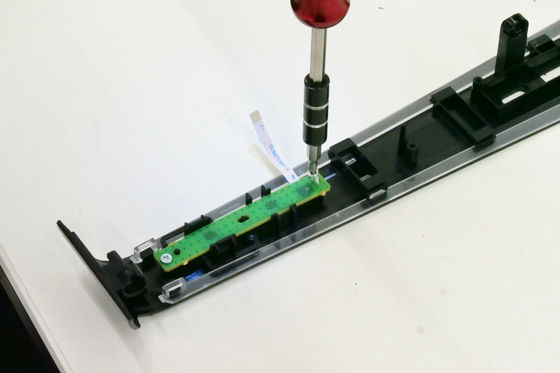
Then remove the wireless antenna board.
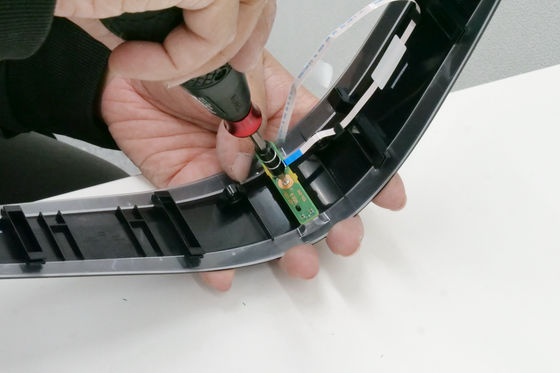
This succeeded in disassembling all the parts into pieces. It took less than 2 hours to disassemble all the parts into pieces. It was relatively easy to disassemble except for the liquid metal part, but the difficulty increased at once due to the liquid metal, and the editorial staff in charge of disassembly said, 'It is impossible to reassemble!' I thought the movement was hopeless, but ...
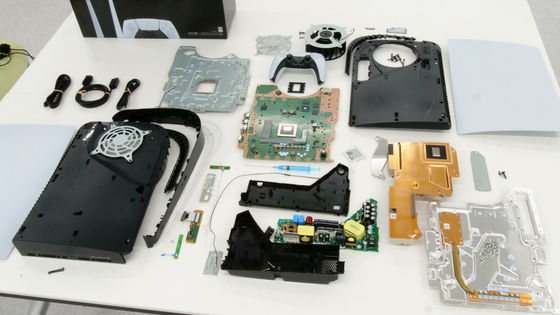
I injected a commercially available liquid metal called
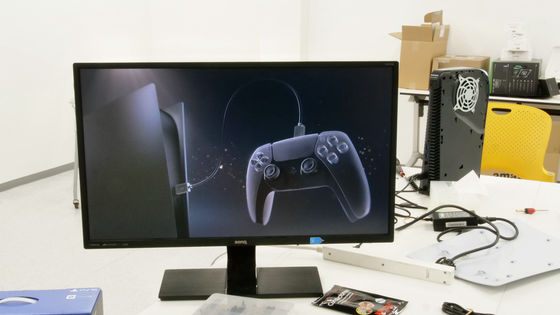
Related Posts:






